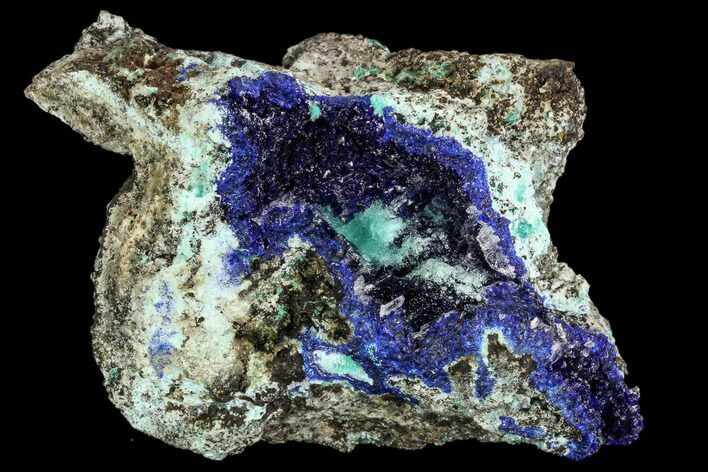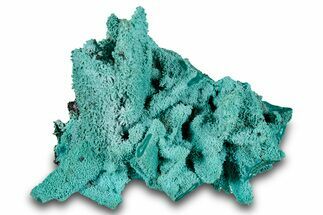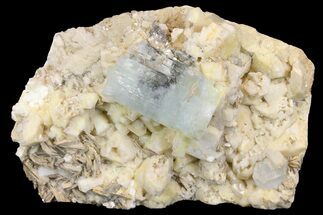This Specimen has been sold.
2.8" Rosasite, Azurite and Selenite - Hidden Treasure Mine, Utah
This colorful specimen contains deep blue azurite crystal formations with blue-green, botryoidal rosasite, some of which is enshrouded in transparent selenite crystals. It was collected from the Hidden Treasure Mine in the Ophir District of Utah, a location that's well known for its zinc and copper mineral deposits.
Selenite is a variety of gypsum, a soft sulfate mineral composed of calcium sulfate dihydrate (CaSO4 · H2O). When chemically pure, gypsum is transparent and colorless, but impurities give the gypsum a diverse range of colors and formations. Desert rose selenite and satin spar are just a few of the varieties of gypsum known to have formed though hydrothermal processes.
Rosasite is a secondary mineral that forms in oxidation zones of copper-zinc deposits, generally forming a fibrous botryoidal sphere that can appear vitreous and silky. While typically featuring a blue-green color, colorless specimens are not unheard of. The chemical formula of rosasite is CuZnCO3(OH)2.
About Azurite
Azurite is a copper carbonate hydroxide mineral best known for its beautiful and vibrant blue appearance. Azurite typically forms in nodular formations with other colorful, copper-rich minerals. It is a secondary mineral that precipitated in pores, crevices, and caverns from water with high concentrations of carbon dioxide.
Azurite and malachite are known to form in union with each other since their chemical makeup is very similar. In fact, the presence of more or less water in the location of formation is enough to determine whether an abundance of malachite over azurite, or vise-versa, will accumulate.
Azurite is a copper carbonate hydroxide mineral best known for its beautiful and vibrant blue appearance. Azurite typically forms in nodular formations with other colorful, copper-rich minerals. It is a secondary mineral that precipitated in pores, crevices, and caverns from water with high concentrations of carbon dioxide.
Azurite and malachite are known to form in union with each other since their chemical makeup is very similar. In fact, the presence of more or less water in the location of formation is enough to determine whether an abundance of malachite over azurite, or vise-versa, will accumulate.
SPECIES
Rosasite, Azurite & Selenite
LOCATION
Hidden Treasure Mine, Ophir District, Utah
SIZE
2.8 x 1.9"
CATEGORY
ITEM
#109841
 Reviews
Reviews














